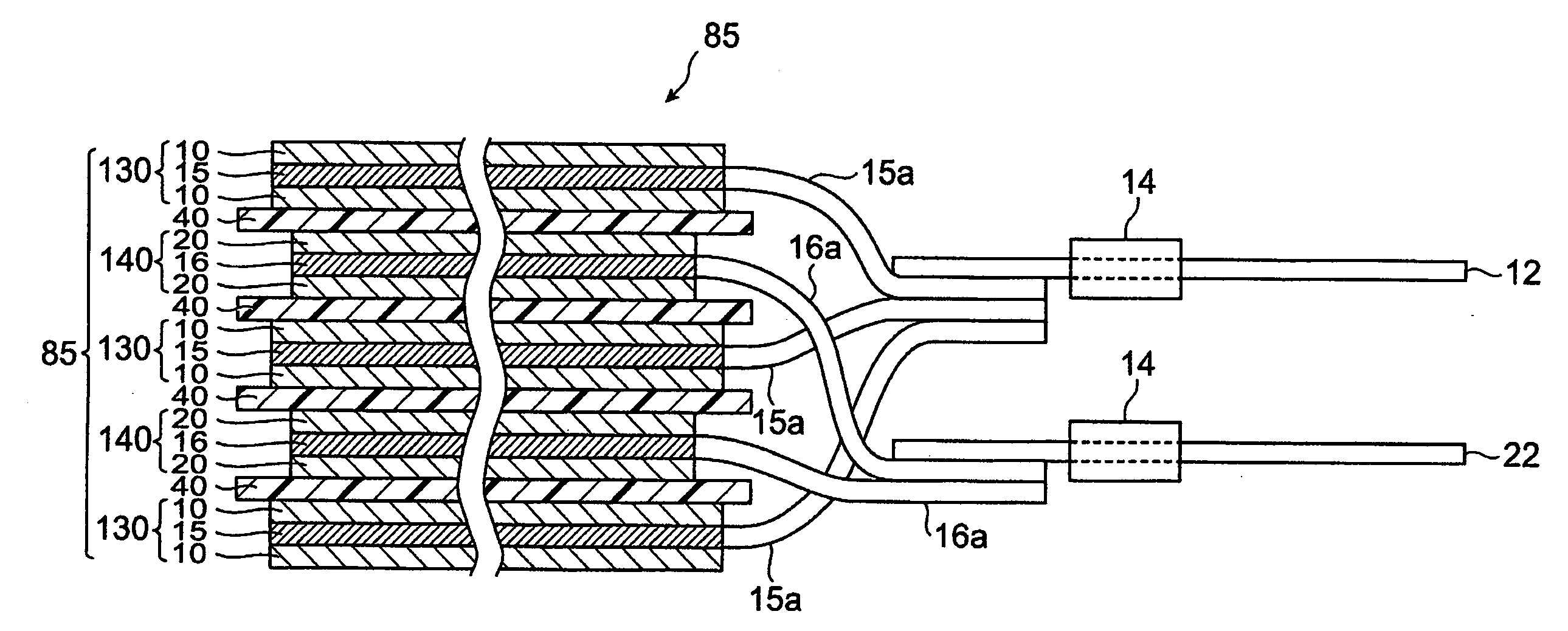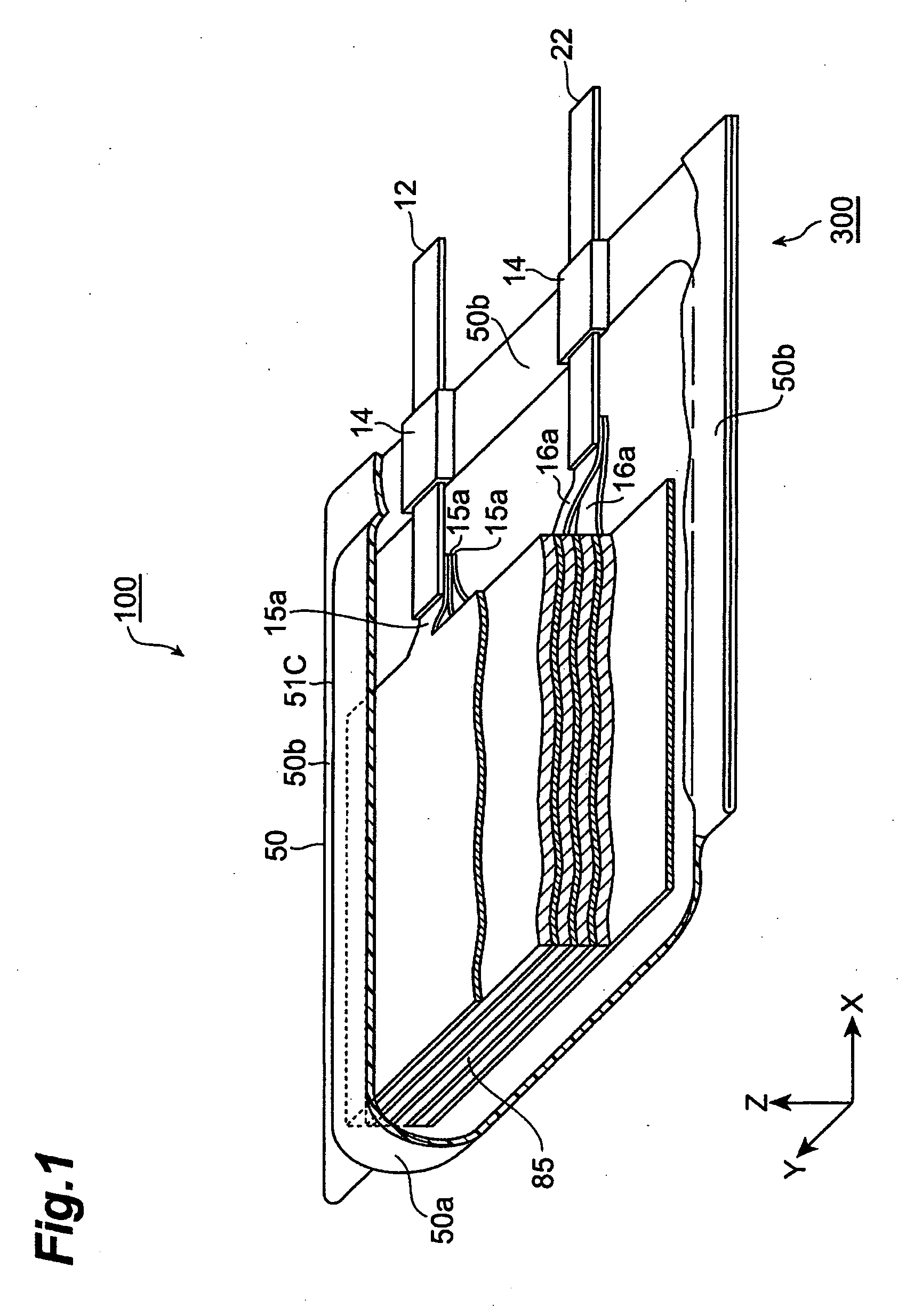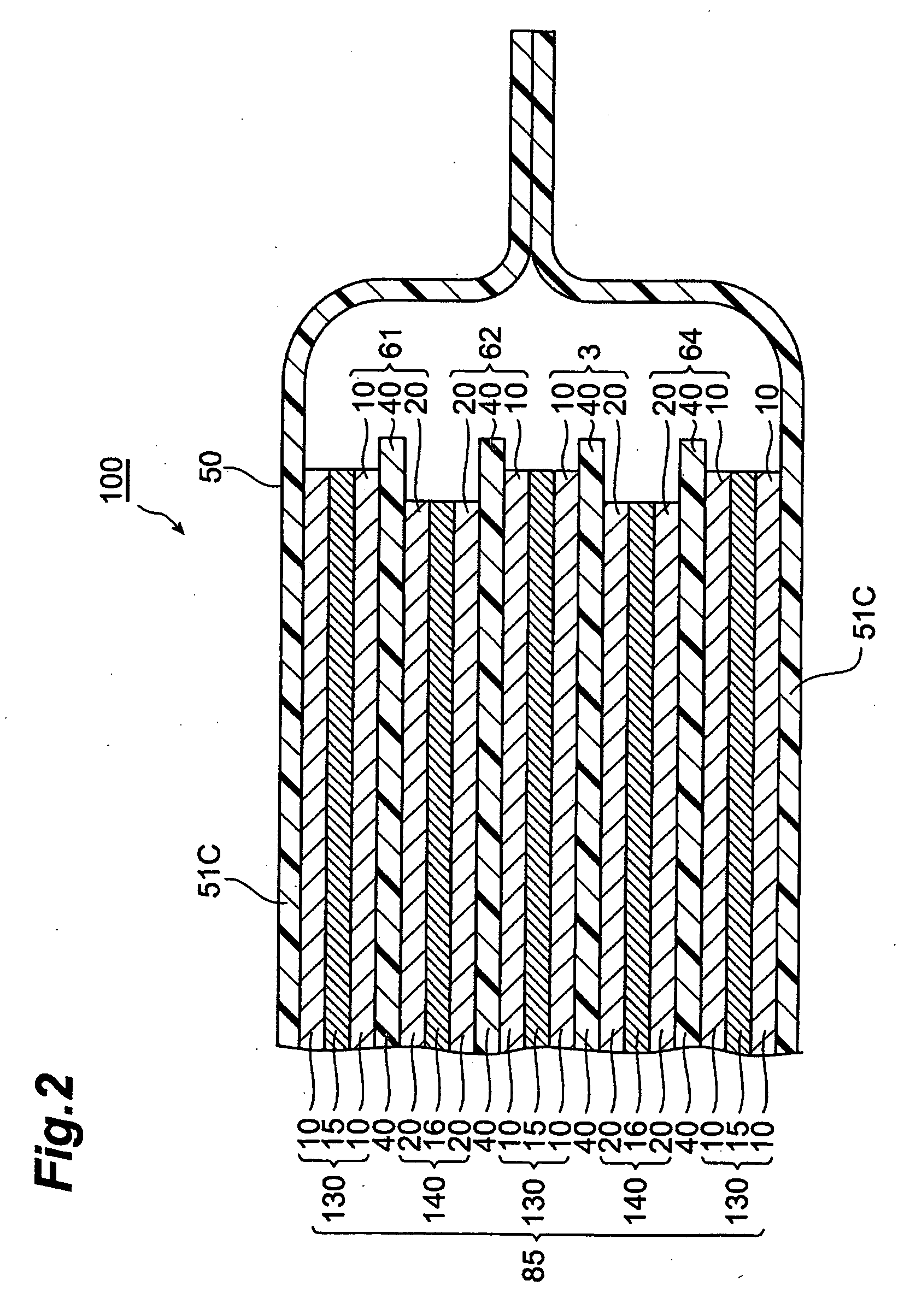Lithium ion secondary battery
a secondary battery and lithium ion technology, applied in the direction of cell components, final product manufacturing, sustainable manufacturing/processing, etc., can solve the problem of insufficient suppression of heat generation, and achieve the effect of sufficiently suppressing heat generation during puncture and reducing manufacturing costs
- Summary
- Abstract
- Description
- Claims
- Application Information
AI Technical Summary
Benefits of technology
Problems solved by technology
Method used
Image
Examples
first embodiment
[0028] First, an embodiment of the lithium ion secondary battery of the present invention will be described in detail.
[0029]FIG. 1 is a partially cut-away perspective view of the lithium ion secondary battery 100 pertaining to the first embodiment of the present invention. FIG. 2 is a YZ plane cross section of FIG. 1. FIG. 3 is a ZX plane cross section of the laminated structure 85, lead wire 22, and lead wire 12 in FIG. 1.
[0030] As shown in FIGS. 1 to 3, the lithium ion secondary battery 100 pertaining to this embodiment is made up mainly of the laminated structure 85, a case 50 that holds the laminated structure 85 in a sealed state, and the lead wire 22 and lead wire 12 for connecting the laminated structure 85 with the outside of the case 50.
[0031] As shown in FIGS. 2 and 3, the laminated structure 85 comprises a three-layer anode (negative electrode) 130, a separator 40, a three-layer cathode (positive electrode) 140, a separator 40, a three-layer anode (negative electrode) ...
example 1
[0093] First, a cathode laminate was produced by the following procedure. First, LiMn0.33Ni0.33Co0.34O2 (subscript numbers indicate the atomic ratio) (as a positive electrode active material), acetylene black (as a conductive auxiliary agent), and polyvinylidene fluoride (PVDF) (as a binder) were readied, and these were mixed and dispersed in a planetary mixer so that their weight ratio would be 90:6:4 (positive electrode active material: conductive auxiliary agent: binder). After this, a suitable amount of NMP was mixed in as a solvent to adjust the viscosity and prepare a cathode coating liquid in the form of a slurry.
[0094] Next, a plain aluminum foil (thickness of 10 μm, puncture strength of 0.22 N) that had not undergone a surface treatment was readied, this aluminum foil was coated on both sides with a cathode coating liquid by doctor blade so that the amount of active material carried would be 5.5 mg / cm2, and the coating was dried. This product was then pressed with a calend...
example 2
[0102] Everything was carried out in the same manner as in Example 1, except that a single-layer, porous polyethylene film with a thickness of 18 μm and puncture strength of 1.67 N was used as the separator.
PUM
| Property | Measurement | Unit |
|---|---|---|
| radius | aaaaa | aaaaa |
| diameter | aaaaa | aaaaa |
| height | aaaaa | aaaaa |
Abstract
Description
Claims
Application Information
 Login to View More
Login to View More - R&D
- Intellectual Property
- Life Sciences
- Materials
- Tech Scout
- Unparalleled Data Quality
- Higher Quality Content
- 60% Fewer Hallucinations
Browse by: Latest US Patents, China's latest patents, Technical Efficacy Thesaurus, Application Domain, Technology Topic, Popular Technical Reports.
© 2025 PatSnap. All rights reserved.Legal|Privacy policy|Modern Slavery Act Transparency Statement|Sitemap|About US| Contact US: help@patsnap.com



